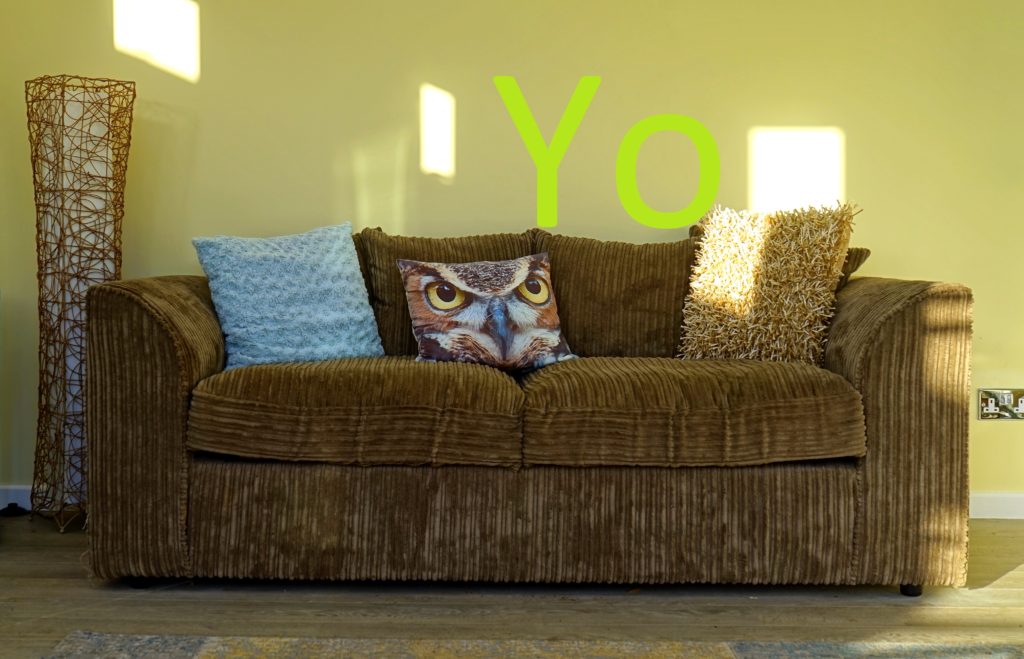You already know that it helps you change habits more easily to first change your environment – meaning, to enter a new environment. That might not always be practical, so here’s good news – you can also do it by changing your environment in the sense of rearranging your personal space.
Human psychology is weird.
It genuinely helps you get out of ruts and change your routines to, for example, move the sofa, rearrange the bookshelf, put your bed against a different wall, or turn your work desk around.
You get the idea.
Maybe making your environment surprising, unfamiliar and novel severs conditional “if-then” loops in your brain, which are super linked to your physical environment, and frees you up – unmoors you. It’s a big cue that things are different, a physical embodiment and confirmation of making changes.
That’s a hypothesis. I don’t know whether that’s exactly how this works. The reason it works is not as important as the evident fact that it does.
Subjectively, doing this makes you feel fresh and open, with this sense of new beginning and brimming potential.
It’s convenient, because while the previously described technique of changing your habits while travelling is highly effective, it is only possible a couple of times per year for most people, and for some, not even that. Whereas rearranging – and while you’re at it, cleaning and decluttering – your personal space is something you can do today, and probably right now, right after you finish reading this article.
The same basic principle is at work in both cases. An advantage of this version is that it is easier and cheaper than going to Iceland for a week, like I did.
You can do both.
I was surprised to find out that other people have found, and used, the technique independently with great success, even to comical degrees.
All through uni, I'd rearrange my room once every 6 months. Ended up with my tiny dorm room opening straight onto my bed (wall to wall) and my desk and wardrobe being on the far side by the window. Optimal feng shui.
— Lucky Lothario (@LuckyLothario) February 22, 2018
There are two related techniques:
- One is what Mark mentioned in the first tweet. Clean, declutter, get rid of old shit. It feels like dropping a fifty ton weight and running off into a field of flowers to dance with unicorns, a breath of fresh air, your life renewed and open.
- The second is managing specific cues in your environment. This might mean adding positive cues, removing negative ones, or both. For example, I put up posters of rockets in my office (thank you, SpaceX), have my marathon medal in plain view, placed running shoes strategically so that I basically trip over them every time I walk through the hallway, and have no candy bars or other tempting shit lying around (even the whiskys are in a cabinet). Obvious stuff, which almost nobody does anywhere near enough.
The second entails a change of environment with a specific symbolic, “semantic” content. But even “neutral” change, like moving the sofa, does the trick of wiggling you free of routine and opening you up psychologically to make changes.
What should we call this budding approach to self-management through environmental hacking? Perhaps environmental hacking. Then, the basic techniques are decluttering, cue hacking, and mixing it up.
The basic ideas:
Your environment is a reflection of your self – obviously, because you shape it. But it also works the other way around – your environment reflects back at you. It tells you who you are, because you shaped it. Therefore, you can use your hands to indirectly reprogram your psyche by manipulating your physical environment.
Vast leverage.
Mind gives simple command to hands. Hands shape environment. Environment gives complex cues to mind. Repeat.
Mind follows matter as much as the other way around (if not more).
TLDR; Mental contents are open to feedback loops with the environment, and you can improve your software more easily by manipulating your surroundings than by bruteforcing it by willpower alone. Changing your environment to influence yourself is easier than waging mental battles against months or years of inertia.
Hack your cues.
To learn more on this topic, read this article.
Enjoyed the reading? Consider supporting Wisdomination.

